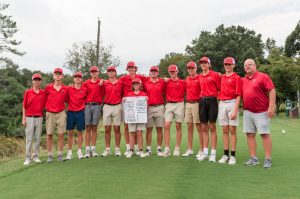Cheater cheater, grades are sweeter
April 2, 2013

It’s so easy. A stretch, a yawn, a sigh at just the right angle to see a neighbor’s paper. It’s so easy. Just click on SparkNotes; there’s no need to read the book at all. Scribbling down a friend’s physics answers in homeroom saves at least an hour of work at home. Cheating is so easy.
“A lot of kids are under academic pressure,” junior Daneel Patel said. “Parents want their kids to get good grades, and trying to keep up with work is difficult, especially if they’re in a lot of AP classes. Some kids do it because they want the good grade and don’t want to work for it. Some people do it because they can.”
Patel considers copying of tests and quizzes cheating, as well as taking ideas from books and the internet without citation. He does not believe copying or sharing homework to be cheating, however.
“Homework is assigned for you to learn the lesson,” Patel said. “So if you don’t want to learn the lesson, don’t do it. But if you steal work off the internet, I feel that’s cheating. And that’s the extent of my morals. Everything else is fair game.”
Types of cheating vary across subject; a student who cheats in English may not cheat the same way in a math class. English teacher Robin Frost sees very little deliberate cheating in her classes.
“It’s usually copying other people’s assignments,” Frost said. “Usually, they’ve fallen behind; maybe their schedule is too busy, and they’re not getting their work done. I don’t see it as a malicious thing. It’s usually a desperate thing. They’re trying not to lose points from their grade.”
Plagiarism, which Frost sees infrequently, not only involves the direct copying of a source’s words, but also the use of its ideas without proper citation.
“I don’t get blatant plagiarism,” Frost said. “It’s usually unintentional. If I have plagiarism in my early research papers, I don’t punish, I teach. Usually, the kids just don’t know. But I do like that the book is thrown at them if the plagiarism is blatant.”
As technology becomes more commonplace, it is easier for students to text answers to a test on devices like cell phones and iPods. Math teacher Sarah Singer is especially concerned with the ease of cheating with technology.
“There’s tons of ways you could have the answers,” Singer said. “That’s why I always make multiple versions of tests and quizzes to avoid it. One time, years ago, one kid had all the right answers…to the other version of the test. I wasn’t very happy with him.”
While Singer also catches cheating infrequently, she believes it occurs often under her radar, and gives immediate referrals to cheating students she is able to pinpoint.
“It’s just not cool,” Singer said. “I think there are groups of people who cheat, and groups who don’t. My concern is that those pockets of cheaters create a cheating culture where everybody does it, and it’s wrong. To be honest, in some respect, cheaters today are lazier. People used to break into teacher’s classrooms. But with Google, I guess you don’t have to.”
Assistant principal Kraig Kelican also says that technology is an important tool for cheaters.
“[I’m sure] there’s a lot more cheating that goes on that we don’t find,” Kelican said. “I think the teachers who are diligent and watch for all types of cheating find it, but there are other things that happen with cell phone use. I think that’s a becoming a major problem here, as well as in other states.”
While Frost encounters “desperate” cheating, senior Mattie Reynolds believes that cheating occurs because students don’t want to work; ironically, they may spend more of the time cheating than studying.
“They don’t feel they need to take the time to actually study,” Reynolds said. “It was a lot more blatant in freshman and sophomore year. I feel like now, in senior year, people just accept failure a little bit more.”
In four years of high school, the majority of cheating Reynolds has observed occurs during quizzes and tests.
“I remember Mrs. [Cora] Tolosa caught at least two people in my Spanish II class with cheat sheets hidden in their desks,” Reynolds said. “Then there’s the blatant asking of questions to someone else [during the quiz].”
How to discipline students caught cheating usually depends on the teacher’s discretion; on occasion, teachers forgo writing referrals because methods like “wandering eyes” can be difficult to prove. Reynolds deems the current anti-cheating policy too elastic.
“I don’t think in this situation, it’s taken seriously,” Reynolds said. “Maybe if the punishment were more severe, like in college, where you can be kicked out for plagiarism, we could ease the problem.”
When a student is caught cheating, a referral documents the act with his or her assistant principal, parents are contacted, and the student receives a zero on the assignment.
“If they get caught again, they fail the course,” Kelican said. “I’ve only seen that happen once, that I can remember. I have probably seen a total of three or four [cheating referrals] this year. They’re very blatant; it’s usually the young kids. Half of it is plagiarism, and half of it involves cheat sheets and other assistance on a test.”
Further education could help to reduce the level of cheating in school, according to Kelican. Students are aware that methods like test cheat sheets are dishonest, buy may be ignorant about other techniques.
“I’m not sure kids realize what plagiarism is,” Kelican said. “I think they feel if they change a word or two, it’s okay. I don’t know what kind of education they get at the middle school level, but [plagiarism] is something we need to look into.”
Frost believes that whatever the temptation, cheating puts students at a disadvantage.
“The bottom line is, you could cheat up a storm, but you didn’t learn anything and build the skills,” Frost said. “When you get the next level class, you don’t know anything. Students see it as a game.”






